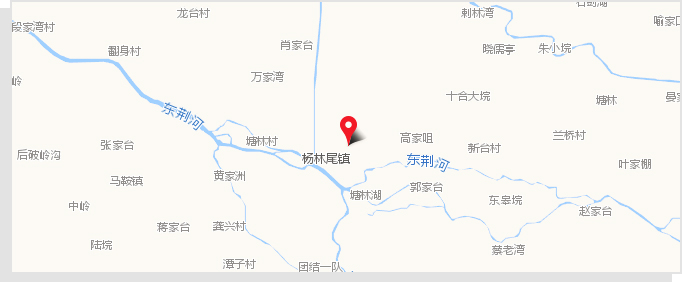Safe Storage and Use of Gas Cylinders
Classification:
Industry information
Author:
2018/12/14 16:00
Safety Storage Requirements for 01 Gas Cylinders
1. Oxygen cylinders and acetylene cylinders shall not be near heat sources, electrical equipment, grease and other flammable articles.
2. When using acetylene bottle, we should pay attention to fixing, prevent dumping, and strictly prohibit lying down. For the fallen acetylene bottle, we should not use it directly by opening air. Before using it, we must stand firm for 15 minutes before using it, and then connect the decompressor to use it.
3. When using, transporting and storing acetylene cylinders, the ambient temperature shall not exceed 40 C.
4. Keep the acetylene bottle upright when it is placed, and take precautions against falling down. It should not be placed on rubber or other insulators.
5. The distance between cylinder and open fire should not be less than 10 meters. The distance between oxygen cylinder and acetylene cylinder is more than 5 m.
6. Oxygen cylinder and acetylene cylinder should be placed and marked, using yellow line specification of 50mm.
Code for Safe Use of 02 Oxygen Cylinders
1. Oxygen cylinders should be stored separately from other flammable cylinders, grease, flammable and explosive. Oxygen cylinder storage should be kept at a distance of more than 10 meters from high temperature and open fire.
2. When storing high-pressure oxygen cylinders, tighten the cap, place it neatly, leave a passage and fix it.
3. Gas cylinders should be equipped with shock rings and safety caps. It is strictly forbidden to impact when handling and using. Transportation should be vertical and fixed. It is strictly forbidden to use bicycles, forklifts or lifting equipment to transport high-pressure cylinders.
4. Oxygen valves should not be sticky with grease or lime, and greasy tools, gloves or work clothes should not be used to contact oxygen cylinders.
5. Oxygen cylinders are forbidden to be exposed to strong sunlight, and sunscreen and shed should be erected for open-air operation in summer.
6. The distance between oxygen cylinder and welding torch, cutting torch and other open flames should be greater than 10 meters, and the distance between oxygen cylinder and acetylene cylinder should not be less than 5 meters.
7. Oxygen in the oxygen cylinder can not be used up completely. The residual pressure of 0.1 Mpa must be left to prevent the explosion caused by acetylene backfilling.
8. It is forbidden to operate cylinders with hands and tools contaminated with oil in order to prevent explosion.
9. Oxygen cylinders cannot collide strongly. It is forbidden to load, unload or carry by throwing, throwing and other methods which are easy to cause impact. It is strictly forbidden to use cranes for lifting.
10. When opening bottle valves and decompressors, people should stand on the side; the opening speed should be slow to prevent excessive temperature of organic material parts or excessive air flow from generating static sparks and causing combustion.
11. In winter, when the pressure reducer and pipe system of the cylinder freeze, it is strictly forbidden to use fire baking or something like iron to blow the cylinder violently, let alone to twist the adjusting screw of the pressure reducer to prevent sudden and large amount of oxygen from rushing out and causing accidents.
12. Prohibit the use of oxygen cylinders without pressure reducers.
Specification for Safe Use of 03 Acetylene Bottles
1. On-site acetylene bottle stock should not exceed 5 bottles, more than 5 bottles should be stored separately in the storage room, the distance between the storage room and the open fire should not be less than 15 meters, and should be well ventilated, with cooling facilities, fire fighting facilities and channels, to avoid direct sunlight;
2. When storing acetylene bottles, acetylene bottles should be upright and measures must be taken to prevent inclination. Storage with chlorine, oxygen cylinders and other flammable and explosive materials is strictly prohibited.
3. Storage rooms must be managed by special personnel, and safety signs should be set up in the watchful places.
4. Use special car to transport acetylene bottle. When loading and unloading, the action should be light, and no skidding or rolling should be allowed. Violent vibration and impact are strictly prohibited. Acetylene bottles should be properly fixed when transporting vehicles.
5. When using acetylene bottles, they must be placed upright, not less than 10 meters away from the heat source and no more than 40 degrees Celsius on the surface of acetylene.
7. Acetylene cylinder must be equipped with special pressure reducer and temper preventer. Before working, it must check whether it is good or not. Otherwise, it is forbidden to use. When opening, the operator should stand behind the side of the valve and move slowly.
8. Gas cylinders should not be close to heat sources and electrical equipment. In summer, shading measures should be taken to prevent sun exposure. The distance from open fire should be more than 10 meters (parallel to the vertical ground when working at high altitude).
9. When the bottle valve is frozen, it is strictly forbidden to bake by fire. It can be hydrolyzed and frozen at a temperature below 10 C.
10. When the workplace moves frequently, it should be installed in a special car. Acetylene cylinders and oxygen cylinders should be avoided together.
11. Copper, silver, mercury and their products are strictly prohibited from contacting acetylene. Copper alloy appliances contacted with acetylene must contain more than 70% copper.
12. Gas in the bottle is strictly forbidden to be exhausted, and no less than 0.05 Mpa residual pressure must be left.
13. When transporting acetylene bottles in automobiles and trolleys, they should be lightly loaded and lightly unloaded. Throwing, sliding, rolling and touching are strictly prohibited. When hoisting and transporting, special fixtures and rain-proof trucks should be used. Cranes and hand hoists should be strictly prohibited for hoisting and transporting.
Key words:
Previous article:
Cylinder Inspection-Dry Cylinder Operation




